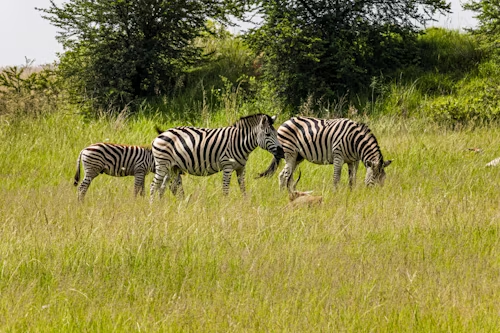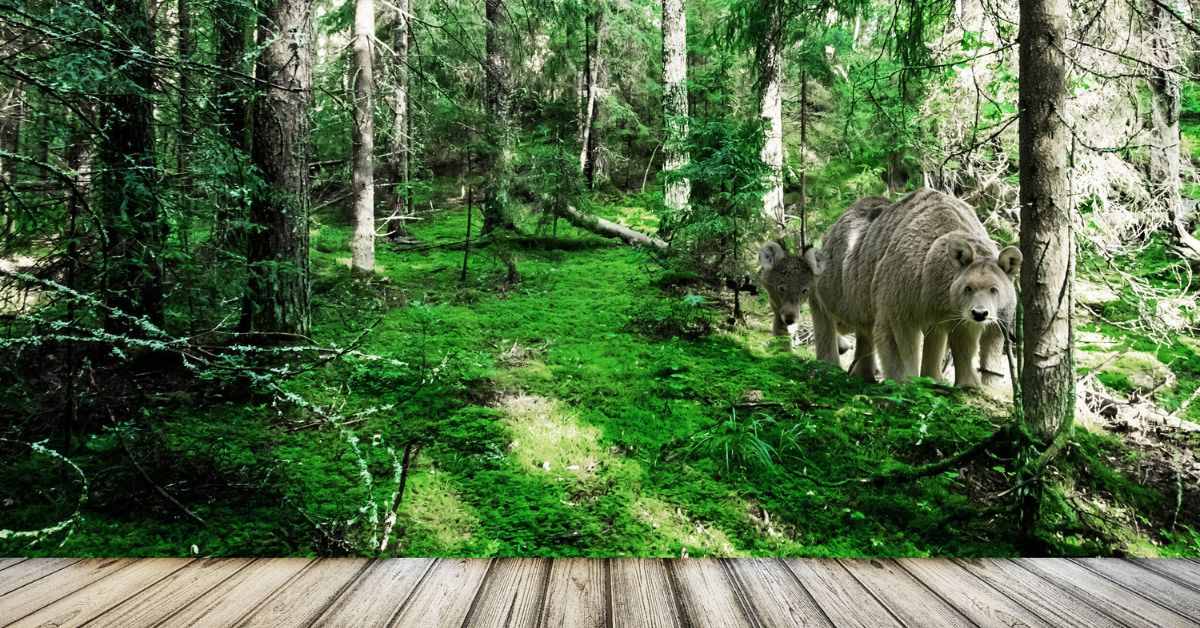Have you ever stopped to think about how animals navigate our world? Imagine a Squirrel, with its hairy tail, happily jumping from one tree to the other, eating nuts from different trees. But what happens when that forest gets chopped down and replaced by busy roads and high city buildings? The squirrel’s world becomes fragmented and cut into isolated patches. This is a big problem for many forest dwellers. They lose access to food, water, and even mates.
But there’s a solution – a network of green pathways called wildlife corridors. These corridors are like lifelines for animals, helping them survive in a changing world. Let’s explore how these amazing pathways work and why they are important.
Top 3 Ways Wildlife Corridor Help Conserve Species
1. Countering the Fragmentation Threat
Habitat fragmentation is a major threat to biodiversity. As human activities expand, forests are cleared for agriculture, roads dissect natural landscapes, and urban development encroaches on wildlife habitats. These once-continuous areas become scattered, isolating animal populations within isolated pockets. This isolation has several detrimental effects.
Imagine a small population of deer confined to a shrinking forest. With limited space to roam, resources like food and water become scarce. Inbreeding, the mating of closely related individuals, becomes more likely, leading to weaker offspring and increased susceptibility to diseases. Isolated populations are also more vulnerable to extinction from natural disasters or introduced predators.
Wildlife corridors come to the rescue by providing safe passage for animals to travel between fragmented habitats. These corridors function like bridges, allowing animals to access essential resources, find new mates beyond their immediate pool, and escape disturbances in their home range. This movement promotes gene flow, the exchange of genetic material between populations.
This genetic diversity is crucial for a species’ ability to adapt to changing environments and resist diseases. Areas with well-established corridors exhibit higher species richness and a healthier overall ecosystem balance.
2. Adapting to a Changing Climate
Our planet is currently affected by unfavorable climate change, and the impacts on wildlife habitats are undeniable. Rising temperatures, shifting weather patterns, and increased droughts force species to adapt or face extinction. Wildlife corridors play a critical role in facilitating this adaptation.
Corridors offer a chance for species to track suitable climates and find new habitats by providing pathways for animals to move toward cooler or wetter areas. This allows them to escape the devastating effects of climate change in their original homes and establish themselves in areas with a better chance of survival.
Think of a population of mountain lions facing reduced prey due to rising temperatures in their lower-altitude habitat. A well-designed wildlife corridor could enable them to migrate to higher elevations with a cooler climate and more abundant prey, ensuring long-term survival.
3. A Haven for Endangered Species
Endangered species, with their constant decline in populations, are particularly vulnerable to the effects of habitat fragmentation. Wildlife corridors offer them a lifeline for recovery. These corridors allow isolated populations of endangered animals to connect, promoting interbreeding and increasing genetic diversity. This is essential for improving the health and viability of endangered populations.
Imagine a small, isolated group of Amur leopards struggling to find mates within their limited territory. A wildlife corridor could connect them with another leopard population, allowing them to reproduce and increase their numbers. This interbreeding also strengthens the gene pool, making the entire population more resilient to diseases and environmental changes.

Photo by Hush Naidoo Jade Photography on Unsplash
Beyond Individual Species: Benefits of Wildlife Corridors for the Ecosystem
The benefits of wildlife corridors extend far beyond individual species. They play a vital role in maintaining healthy and functioning ecosystems. Here are some vital ways corridors contribute to ecosystem health:
- Seed Dispersal: Animals play a crucial role in seed dispersal. As they move through corridors, they carry seeds attached to their fur or through their digestive systems. These seeds are then deposited in new areas, facilitating plant growth and promoting the establishment of diverse plant communities. This diversity fosters a more complex and resilient ecosystem.
- Pollination: Many animals, particularly insects and birds, act as pollinators. These pollinators can reach a wider range of flowering plants, ensuring successful pollination and fruit production by enabling their movement through corridors. This leads to a healthy and thriving plant community, which forms the base of the entire food chain.
- Predator-Prey Dynamics: Corridors allow predators to follow prey populations as they move across the landscape. This helps maintain a natural balance within the ecosystem and prevents any one species from becoming dominant.
Designing Effective Wildlife Corridors
Creating effective wildlife corridors requires careful planning and collaboration. Here are some essential considerations:
- Habitat Suitability: Corridors should be designed to provide suitable habitat for the target species. This includes ensuring the presence of food, water, and shelter along the entire corridor.
- Minimizing Disturbance: Human activities like roads and development should be minimized within corridors to reduce disturbance and allow for safe passage. Techniques like underpasses or wildlife bridges can be employed to enable animals to cross roads or other barriers without risk of injury.
- Connectivity: Corridors should connect fragmented habitats in a meaningful way. This means considering the natural movement patterns and home ranges of target species. A poorly designed corridor that dead-ends into an unsuitable habitat offers little benefit.
- Long-Term Management: Establishing wildlife corridors is just the first step. Long-term management plans are crucial to ensure the corridors remain functional and free from encroachment. This may involve controlling invasive species, monitoring wildlife use, and educating local communities about the importance of these corridors.
What Can We Do to Help?
Wildlife corridors are not simply lines drawn on a map; they symbolize our commitment to a sustainable future. Here are some ways you can get involved:
- Support Organizations: Donate to or volunteer with organizations establishing and maintaining wildlife corridors. At Treestouch.com, for instance, we actively provide helpful articles to inform the world about nature and wildlife.
- Educate Yourself and Others: Spread awareness about the importance of wildlife corridors. Talk to your friends, family, and local representatives about protecting these critical ecological connectors.
- Reduce Your Environmental Footprint: Make conscious choices that minimize your environmental impact. This could involve reducing your consumption of resources, supporting sustainable businesses, and advocating for policies that promote habitat conservation.
We can ensure that wildlife corridors remain vital lifelines for countless species, weaving a tapestry of interconnected ecosystems that will sustain life for generations to come by working together. Let’s build a world where wildlife can roam free and nature thrives in all its vibrant diversity.
Summing Up
As we stand at the crossroads of conservation and progress, the significance of wildlife corridors shines brighter than ever. They are not mere pathways but lifelines for countless species, bridging the gaps between fragmented habitats and nurturing the resilience of ecosystems.
Join us in embracing this vision of interconnectedness and stewardship. Explore more fascinating insights and take action by delving into our treasure trove of articles at Treestouch. Together, let’s pave the way for a future where nature thrives, and wildlife roams freely, bound by the green corridors of hope.

